How and what to do warming heating pipes with their own
Insulation of heating pipes located in the area between the boiler room and the room is a necessary measure, as it allows to keep the temperature of the coolant. If it is not done, the heat loss can be up to 20 percent. In this article we will look at how and what is carried out insulation of heating pipes on the street.
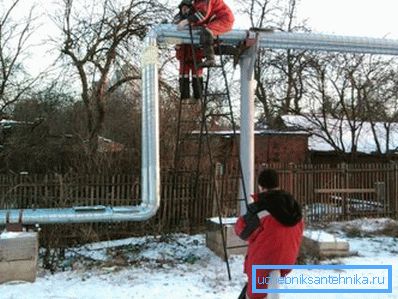
Thermal insulation materials
First of all, we will consider the types of insulation, as there is a rather large assortment on the building materials market. In particular, one can meet both traditional, well-known heat insulators, and completely new solutions.
Therefore, the question of the choice of material in front of many domestic craftsmen is quite acute. To help in this matter, further consider the most common options for insulation.
Mineral wool
Mineral wool is the most traditional material that is truly time-tested.
Among the features of this heat insulator are the following points:
- High thermal insulation properties.
- High heat resistance, so that the material can be used to finish the pipes in which the heat transfer fluid with high temperature passes.
- Fire resistance
- Resistant to acids, oils and other chemicals.
- The price of mineral wool is lower than many other thermal insulation materials.
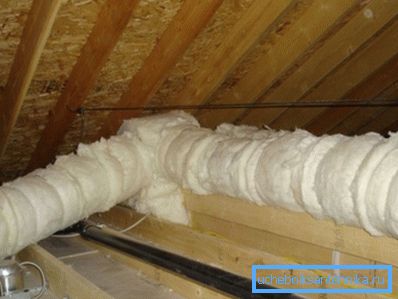
Mineral wool is of several types:
- Basalt;
- Slag;
- Glass.
Any of them can be used for thermal insulation of heating systems. As for the warming process, it looks very simple - the heat insulator is simply wrapped around the pipeline with its own hands, and then fixed with a silk thread.
True, mineral wool loses its insulating properties when wet, so waterproofing is necessary after insulation.
This procedure is performed in this order:
- The warmed pipeline is wrapped with roofing felt.
- For fixing the material, the resulting casing is fixed with wire, which is used as clamps.
- Then the structure is wrapped on top with fiberglass. In some cases, the tape is still wound on top.
Note! With large amounts of work, despite the cheapness of the mineral wool, it is economically unprofitable to use it, since it is necessary to additionally use waterproofing materials.
Such a system of insulation is quite old, but effective and reliable. However, from time to time requires minor repairs.
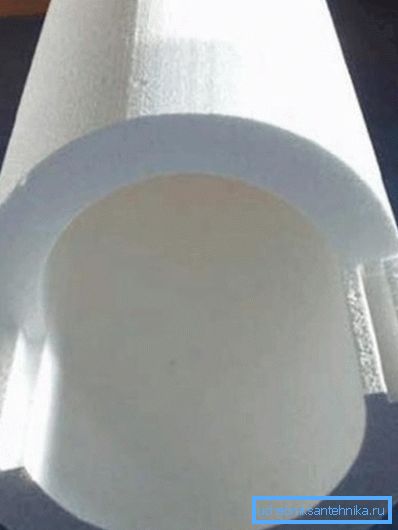
Styrofoam
This material is an alternative to warming mineral wool - it is also quite cheap, and the installation instructions are extremely simple. Insulation made of polystyrene foam in the form of two cylinders, which are fixed on the pipes using wire or self-adhesive tape.
The main advantage of this insulation is that it is not afraid of moisture, in contrast to mineral wool, and the installation process takes much less time.
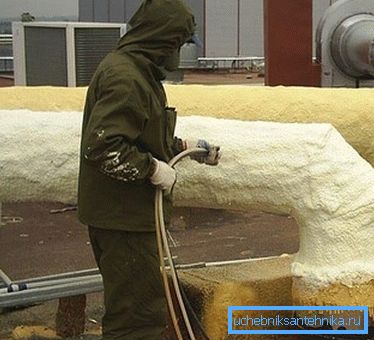
Penoizol
This insulation resembles expanded polystyrene in its composition, however, unlike it, it is applied in a liquid form. Most often, insulated pipes for heating with it can be found outdoors, as it is well tolerated by all atmospheric effects.
Among the advantages of the material are:
- Ease of application;
- Monolithic insulation layer.
But the disadvantage of penoizol is the impossibility of using it without a special apparatus. Therefore, to insulate pipes on their own will not work.
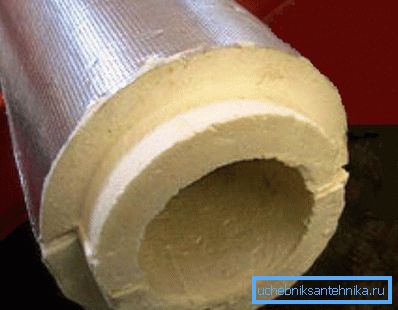
Polyurethane foam
This material is of two types:
| Polyurethane foam | Many may argue about the possibility of using foam for pipe insulation, however, as practice shows, it is an excellent heat insulator for small sections of pipes. |
| PPU shell | The material received this name because it is produced in the form of two half-cylinders. According to the installation technology, it resembles expanded polystyrene. |
I must say that in recent times it is polyurethane foam that is most popular among heaters, as it has good strength and thermal insulation characteristics.
Insulation of pipes in the room
Almost all know that it is necessary to carry out the insulation of heating pipes in the basement, but many people doubt the need to warm the pipes inside. This view is motivated by the fact that the energy that the pipeline is losing is spent on heating the same rooms.
It should be clarified that this is not about wiring, which provides for the connection of radiators, but about central loungers and risers. So their insulation also makes sense, since the source of heating is not pipes, but batteries. This issue is particularly acute in private homes, where the risers are often embedded in the wall or located between the drywall and the wall.
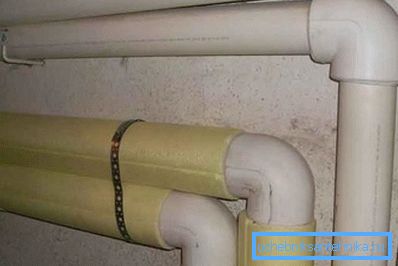
Therefore, experts say that the main part of the pipes, which are even in the apartment, must also be insulated. Polyethylene is usually used as insulation for these purposes. Before installation, it is cut along, which allows you to put the material on the pipe. (See also the article Thermal insulation of pipes: features.)
Tip! To foam mounted tightly and without gaps, at the joints, you can put adhesive tape.
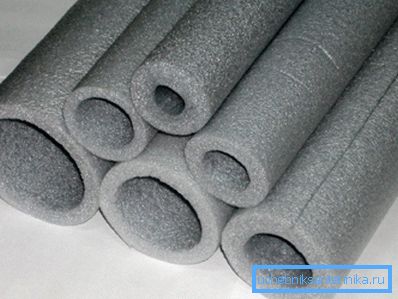
Here, perhaps, all the moments of heating pipes heating outside and indoors.
Conclusion
Today, there are a lot of materials that allow you to perform heating of heating pipes independently, while spending a minimum of time and money. The only thing to get a quality result, to perform the work should be carefully and carefully. From the video in this article, you can get more information on the topic.